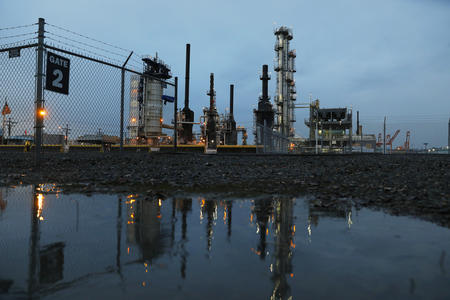We are exhorted, vividly and unequivocally in bold block letters signed over a stairwell: BELIEVETH.
It’s almost the only hint of churchiness left in the former First Church of Christ Scientist on Capitol Hill, just reincarnated as The Sanctuary in a conversion to a dozen high-end townhomes. The stained glass windows feature geometric abstractions rather than religious motifs. The rest of the architectural flourishes could as easily belong to a bank or school building from the early 20th century. But BELIEVETH remaineth from the Christian Scientists, and it’s a worthwhile exhortation even for secular Seattleites.
Believe in community, in beauty, in architecture — you name it. Just go forth and honor it.
Whether this conversion will help us to believe more deeply in adaptive re-use is a good question. The architects and interior designers have done a lot of things right, and it’s decidedly a good thing to have an important and exquisite historic building preserved. But some things weren’t done right, and they’ve diminished the integrity of the original. It’s worth pondering them as wider issues in preservation, because they’re common practices that nobody seems to be questioning.
First, the good. The original building was designed by Charles Bebb and Louis Mendel, European-born architects who had the most prominent design firm in the Seattle of a century ago. Like most architects of the time, they worked in a wardrobe of styles from German Medieval to Mission Revival. This church, completed in 1914, is supremely assured but just-short-of-grandiose neoclassical revivalism.
It’s solid and stately, but its heroic stance is softened by restrained ornamentation. It’s a better building outside than the more talked-about First United Methodist, which is more pompous and less coherent.
The Sanctuary’s modern architects, the Runberg Architecture Group, and interior designers Robin Chell Design, preserved the shell of Bebb & Mendel’s church and essentially grafted a new residential compound inside it. There’s a central atrium under the great egg-shaped stained glass skylight, with swankly sculpted individual entrances to all the units on its perimeter. Wisely, Runberg raised the apparent ground floor of the atrium 12 feet so residents wouldn’t get that mouse-in-a-cathedral sensation.
The residence interiors are endlessly intriguing, featuring tall and skinny but often exhilarating spatial volumes. There’s stirring built-in wall decoration in the form of the church’s original pilasters with leafy Corinthian capitals, and a good variety of textures from exposed brick walls and stair treads recycled from fir flooring and oak pews. Wherever possible, the architects carved out decks and roof gardens. They weren’t afraid to give the units a strong vertical orientation; most of them are four levels deep—some five, counting their roof decks.
But now the problems, which begin in that atrium. There’s a wierd and intrusive visitor from the planet Mongo, a tall, oval-shaped fencelike structure made of colored resin panels, occupying prime real estate right in the middle of the space. Peer inside, and you’ll see there’s nothing but a pair of large mirrors, intended to bounce some of the light filtering through the skylight around the atrium.
Architect Michele Wang, Runberg’s principal in charge of the project, says the city building department insisted on something to keep human bodies out of the space directly below the skylight, just in case a quake might happen to shake loose a piece of glass. More fetching solutions such as a decorative pool were considered, Wang says, but fell by the budgetary wayside. It was a ridiculous requirement by the city, and the solution is antithetical to the classical logic of the original building. It’s like stuffing a Batman bookmark in a Bible.
The residences tend to be dark, which may discourage some buyers. The architects ingeniously remounted some of the stained glass windows on sliding tracks where they can move aside and expose clear glass windows, but many more remain fixed in place.
The result, unfortuntely, is many rooms that feel claustrophobic. Some, buried deep in the building’s bowels, have no outside exposure at all and interior “windows” to the atrium don’t much help. There was probably no good solution here; replacing the stained glass would have provoked existential howls from the preservation establishment. Light wells might have helped, but it wouldn’t have been easy to plumb adequate daylight all the way to the lowest floors.
In some places, pieces of new structure butt rudely into old, like a heckler interrupting a professor’s lecture on classical aesthetics. In one of the units a steel mezzanine rail smacks right into the middle of a pilaster. You wish it had shown a little respect. This is one of those things that happens all too frequently in renovations of historic buildings. The widely accepted philosophy is to clearly distinguish new construction from old, so there’s no cheap faux-historicism and the building forthrightly displays its evolution through time. This is as it should be, but too often in practice it plays out as the new simply dissing the old, the conjunctions between the two executed carelessly or gracelessly.
With all these conjunction issues, the four units on the building’s west side — the back alley, essentially — may be the most attractive in the complex. Since this back-alley facade didn’t have historic value, all the windows can be clear glass; and there are no built-in classical ornaments posed in uneasy counterpoint with the modern design theme inside.
These units also sport rooftop decks and views of Elliott Bay, no minor perk.
Is there a preservation lesson somewhere in this mixed bag? Yes, a couple. One is that building codes need to be flexible enough to let common sense prevail. The other is that projects such as this are absolutely worth the risk and nearly inevitable criticism, even though perfection is unattainable.
There’s a near-100 percent probability that if the church had been demolished, whatever modern condoplex replaced it would be a poorer building. That’s a hell of an indictment, but look around Seattle — and believeth.



